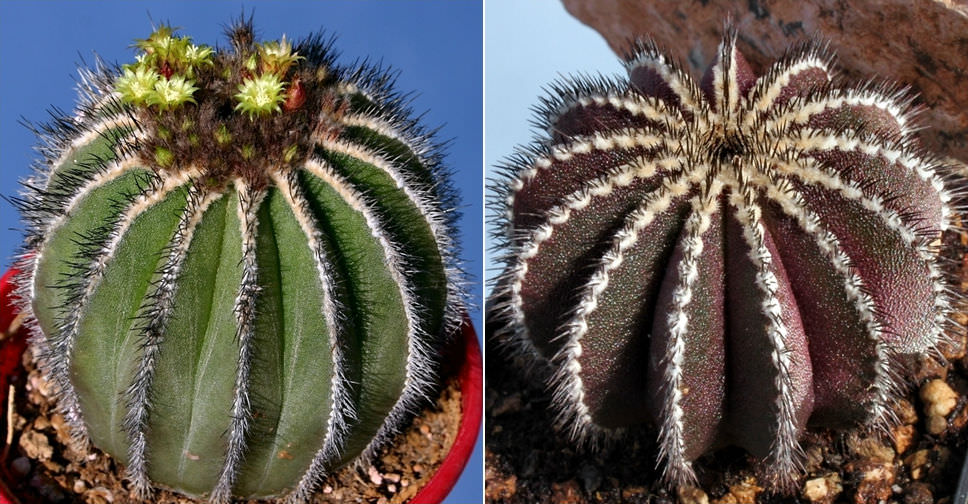Uebelmannia is a remarkable genus of cacti native to the arid landscapes of Brazil, known for its distinctive ribbed architecture and striking appearances. Commonly referred to as the “Sunset Cactus” owing to its vibrant colors that reflect the hues of a sunset, Uebelmannia cacti contribute significantly to the diverse palette of the cactus family. This article serves as a comprehensive guide to understanding, nurturing, and appreciating Uebelmannia species.
Originating from the harsh terrains of South America, Uebelmannia showcases not only beauty but also resilience. This guide will delve into its taxonomy, habitat, care requirements, propagation techniques, and potential uses, thereby providing a holistic understanding of this captivating genus.
Taxonomy and Classification
The Uebelmannia genus belongs to the family Cactaceae, which encompasses a wide variety of succulent plants. Within the cactus family, Uebelmannia is classified under the subfamily Cactoideae. This genus comprises several species, with Uebelmannia pectinifera and Uebelmannia buiningii being the most recognized. Understanding the taxonomy is critical for distinguishing Uebelmannia from other cacti and appreciating its unique characteristics.
Both species exhibit a fascinating morphological structure characterized by ribbed stems and prominent spines. The spine arrangement can vary across species, providing unique identification markers. Uebelmannia pectinifera, for instance, sports a denser spine coverage than its counterpart, Uebelmannia buiningii. Such subtle differences not only heighten their appeal to cactus enthusiasts but also accentuate their evolutionary adaptability.
Natural Habitat and Environmental Preferences
Uebelmannia thrives in the arid regions of Brazil, specifically in the states of Bahia and Minas Gerais. These cacti are adapted to the dry, rocky soils and experience significant temperature fluctuations between day and night. Understanding their natural habitat is essential for successfully cultivating these species in a home environment.
Uebelmannia prefers full sun to partial shade. Ideally, it should receive at least six hours of sunlight daily, which is crucial for vibrant coloration and healthy growth. The ideal temperature range for optimal growth lies between 70°F to 100°F (21°C to 38°C) during the day, while nighttime temperatures can drop significantly, mimicking their native habitat. These temperature ranges foster their characteristic development and ensure they stay true to their natural resilience.
Soil composition also plays a pivotal role in the health and vigor of Uebelmannia. A well-draining, gritty soil mix will prevent root rot, a common affliction in cacti. A composition of 50% potting mix and 50% perlite or coarse sand will yield the best results. This blend emulates the sharp drainage found in their natural environment, facilitating root development and moisture control.
Caring for Uebelmannia: Best Practices
Providing the appropriate care for Uebelmannia is paramount to its wellbeing. Understanding watering, feeding, and repotting regimes can make the difference between a thriving cactus and a languishing specimen.
Watering: One of the most critical aspects of caring for Uebelmannia is mastering the art of watering. This cactus is xerophytic, meaning it is well-suited for dry environments and prefers infrequent watering. During the growing season (typically spring and summer), it is advisable to water every two to three weeks, ensuring the soil dries out completely between waterings. In the dormant winter months, reduce watering significantly to once a month or less, as the plants do not actively absorb water during this time.
Fertilizing: Fertilization is essential for optimal growth, but moderation is crucial. A diluted, balanced cactus fertilizer during the growing season can enhance the development of new growth and color intensity. It is suggested to fertilize once a month from April to September while avoiding fertilization in the fall and winter months when the plant is dormant.
Repotting: Repotting is necessary when the cactus outgrows its container. This process typically occurs every couple of years. Choose a container that allows good drainage, and always use a fresh, well-draining soil mix. Be gentle during the repotting process to avoid damaging the spines and roots, which can impact plant health.
Propagation Techniques for Uebelmannia
Propagation of Uebelmannia can be accomplished through seeds or offsets. Here, we will explore both methodologies, each offering its unique challenges and rewards.
Seed Propagation: This method involves planting seeds in a sterile, well-draining soil mix. The seeds should be sown on the surface of the soil and lightly misted. Maintain high humidity by covering the pot with plastic while ensuring that it receives ample light. Germination typically occurs within several weeks under ideal conditions, and the seedlings should be gradually acclimatized to lower humidity levels as they grow.
Offset Propagation: Some Uebelmannia species produce offsets, or pups, that can be separated from the parent plant. When these pups reach a reasonable size, typically a couple of inches in height, they may be gently twisted from the base of the mother plant. Allow the offsets to callous for a few days before planting them in a separate pot with a well-draining soil mix. Proper care should be taken to ensure that the new plants are not overwatered during their initial growth phase.
Medicinal and Aesthetic Uses
Beyond ornamental appeal, Uebelmannia cacti carry potential medicinal properties, although research is limited. Traditionally, various cacti have been utilized in folk medicine for their purported health benefits. While Uebelmannia is generally appreciated for its aesthetic qualities, discussions surrounding its possible therapeutic effects continue among researchers and traditional healers.
Moreover, the aesthetic usability of Uebelmannia cannot be understated. Their unique ribbed forms and the ability to produce vibrant blooms make them suitable for ornamental gardening, landscape design, and as striking indoor plants. Their hardiness translates into low-maintenance landscaping, attracting both novice gardeners and seasoned horticulturists.
In conclusion, Uebelmannia is a fascinating genus that not only captivates with its beauty but also teaches about resilience and adaptation in challenging environments. Careful attention to their habitat requirements, robust practices in cultivation, and a deeper understanding of their propagation can enhance any succulent collection. As the popularity of cacti grows, the Uebelmannia stands out, promising both aesthetic pleasure and opportunities for further exploration into its myriad benefits in botany and beyond.

Leave a Comment